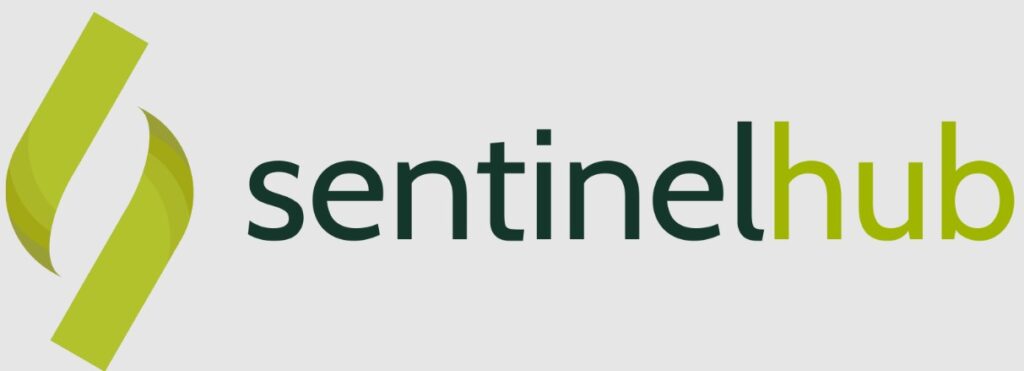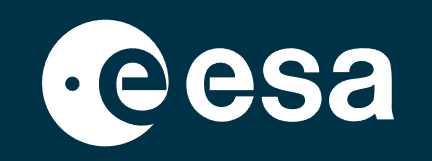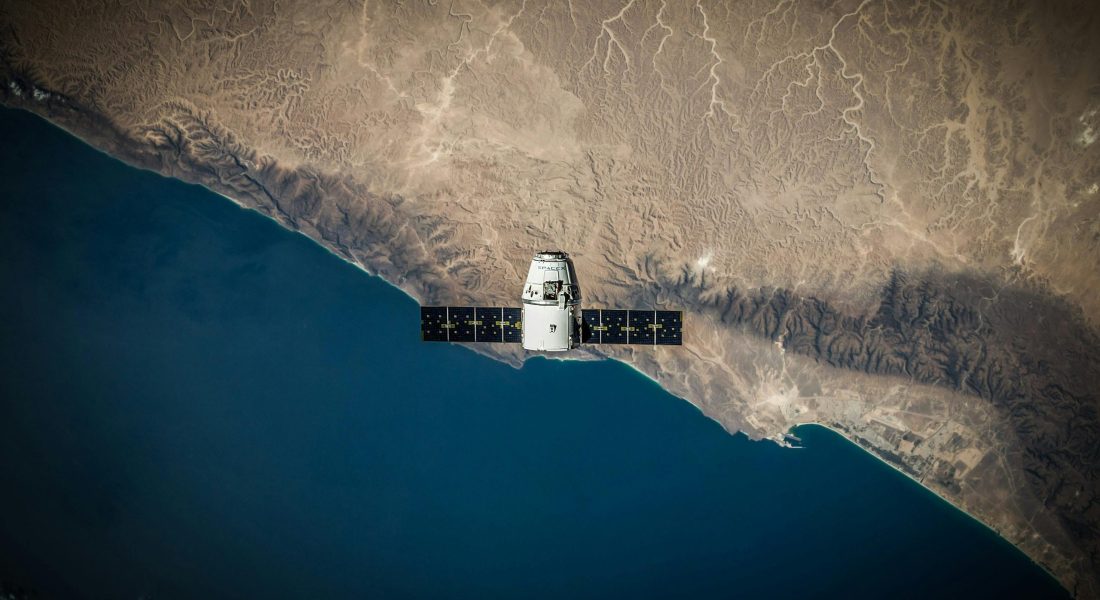Thermal imaging from space sounds like sci-fi, but it’s very real (and very useful). Whether you’re tracking wildfires, monitoring industrial sites, or checking building heat loss, satellite thermal images now let us “see what’s invisible.” But who’s doing this well right now? In this guide, we’ll walk you through some of the top companies offering satellite thermal imaging services, what makes them stand out, and how to pick the right one for your needs.

1. FlyPix AI
At FlyPix AI, we focus on making satellite and aerial imagery easier to work with. Instead of spending hours analyzing thermal data manually, our platform helps automate the process with AI. We built a system that can detect, segment, and monitor what’s happening on the ground whether it’s tracking temperature changes, mapping vegetation stress, or analyzing infrastructure heat loss. It’s designed so users can get insights faster without having to code or handle raw data themselves.
What we’re really doing is giving people a way to “see” complex thermal and visual patterns in a clear, structured way. With our GeoAI tools, users can process satellite or drone images and turn them into actionable insights things you can actually make decisions from. We like to think of it as bridging the gap between AI and geospatial analysis. You don’t need to be a data scientist to understand what’s going on in your imagery; you just need the right tools to make sense of it.
Key Highlights:
- AI-powered platform for satellite and aerial image analysis
- Automates detection and segmentation of thermal and visual data
- Works with no-code tools to make geospatial insights more accessible
- Supports both satellite and drone imagery processing
- Designed for real-world use across industries like energy, agriculture, and environment
Who it’s best for:
- Teams monitoring thermal activity in infrastructure or land areas
- Environmental analysts tracking vegetation or heat patterns
- Agriculture companies managing irrigation or crop stress
- Energy and construction firms analyzing surface temperature
- Organizations looking to automate image analysis without coding
Contact and Social Media Information:
- Website: flypix.ai
- Email: info@flypix.ai
- LinkedIn: www.linkedin.com/company/flypix-ai
- Address: Robert-Bosch-Str. 7, 64293 Darmstadt, Germany
- Phone: +49 6151 2776497

2. SatVu
SatVu is a tool focused on capturing thermal data from space. This tool uses infrared satellites to monitor how buildings, cities, and industrial sites release heat. That kind of information can tell a lot about energy efficiency, climate impact, and environmental changes. Its approach mixes satellite imagery with analytics to help organizations see things that regular optical cameras miss.
What makes SatVu stand out is its focus on sustainability and practicality. Instead of just collecting data for data’s sake, they aim to make it useful for real-world decisions like improving building insulation, tracking heat leaks, or assessing urban temperature patterns. They collaborate with industries, governments, and environmental groups to translate all that infrared data into something actionable and understandable.
Key Highlights:
- Focus on thermal infrared satellite imagery
- Monitors heat emissions from buildings and urban areas
- Helps identify energy inefficiencies and climate impacts
- Collaborates with governments, researchers, and private sectors
- Integrates data into user-friendly analytics tools
Who it’s best for:
- City planners looking to reduce urban heat islands
- Energy consultants assessing building performance
- Environmental agencies monitoring climate change
- Construction and real estate developers focused on sustainability
- Researchers studying temperature trends or energy use
Contact and Social Media Information:
- Website: www.satellitevu.com
- Email: hello@ha-lo.co
- Address: Sustainable Workspaces 5th Floor, County Hall, Belvedere Road, London, SE1 7PB UK
- LinkedIn: www.linkedin.com/company/satvu
- Twitter: x.com/satvu

3. Hydrosat
Hydrosat takes satellite data and turns it into something you can actually use to understand what’s happening on the ground. They focus on thermal infrared imagery basically, the stuff that lets you see temperature changes across land, water, and vegetation. It’s the kind of data that helps you figure out where droughts are forming, how crops are doing, or even how energy use affects the land. It’s not flashy, but it’s incredibly useful if you care about what’s going on with our planet.
What’s cool about Hydrosat is how grounded they are in real-world use. They’re not just tossing around space buzzwords; they’re giving farmers, researchers, and even city planners a clearer view of how Earth behaves day to day. Their tools help people spot water shortages before they become disasters, monitor soil health, and plan smarter for climate challenges. In short, they take a ton of complex satellite data and make it actually make sense.
Key Highlights:
- Uses thermal infrared satellites to track land and water temperature
- Focused on soil moisture, vegetation health, and environmental patterns
- Bridges the gap between science data and practical decision-making
- Useful for climate, agriculture, and sustainability planning
- Keeps things data-driven without overcomplicating the process
Who it’s best for:
- Farmers who want early warnings about crop stress or drought
- Climate scientists studying surface temperature and moisture trends
- City or regional planners managing water and land resources
- Energy providers watching for heat patterns near infrastructure
- Anyone who needs reliable thermal data without the jargon
Contact and Social Media Information:
- Website: hydrosat.com
- Address: 1250 Connecticut Avenue NW, Suite 700-PMB 5127 Washington, DC 20036
- LinkedIn: www.linkedin.com/company/hydrosat
- Instagram: www.instagram.com/hydrosat_earth

4. Sentinel Hub
Sentinel Hub makes it easier for people to work with satellite images without having to be experts in remote sensing. They built a system that basically acts as a bridge between raw satellite data and everyday use. Instead of downloading giant files and processing them manually, users can stream, analyze, and visualize satellite images right in their browser or apps. It’s the kind of setup that saves time for anyone who just wants to focus on the insights, not the technical mess behind it.
They pull in data from satellites like Sentinel, Landsat, and others, making it accessible for everything from agriculture monitoring to environmental research. The idea is to take complex satellite data and make it usable for people who actually need it, not just scientists or space agencies. The platform feels practical, built for real-world use, whether you’re tracking deforestation, monitoring crops, or just experimenting with geospatial data.
Key Highlights:
- Makes satellite data easy to access and process through APIs
- Supports imagery from multiple satellite sources like Sentinel and Landsat
- Offers real-time visualization and analysis tools
- Designed to work across different industries and applications
- Focuses on user-friendly integration with minimal setup
Who it’s best for:
- Developers building tools with satellite data
- Researchers studying land use, vegetation, or climate
- Agriculture companies monitoring crop and soil conditions
- Environmental groups tracking changes in forests or coastlines
- Educators and data enthusiasts learning geospatial analysis
Contact and Social Media Information:
- Website: www.sentinel-hub.com
- Email: info@sentinel-hub.com
- Phone: +386 (0) 1 320-61-50
- Address: Cvetkova ulica 29 SI-1000 Ljubljana Slovenia
- LinkedIn: www.linkedin.com/showcase/sentinel-hub
- Twitter: x.com/sentinel_hub
- Facebook: www.facebook.com/sentinelhub.by.planetlabs

5. OroraTech
OroraTech builds small satellites that spot thermal changes on Earth. Basically, they’re using space to detect heat before it becomes a bigger problem. Most of their work centers around wildfire detection and environmental monitoring. The idea is to catch heat anomalies early, so governments, forest services, or insurance companies can react faster. They pull in thermal data from their own satellites and mix it with other sources to get a clearer picture of what’s happening on the ground.
What’s interesting about them is how down-to-earth their mission feels. They’re not trying to sell “space magic”; they’re focused on practical uses like helping manage natural resources, monitoring industrial areas, or tracking how climate change impacts land. Their platform delivers alerts and heat maps that actually make sense to people outside of the satellite world, the kind of information that can help someone make a real decision, not just fill a dashboard.
Key Highlights:
- Focus on thermal satellite imaging for wildfire and environmental monitoring
- Uses small-satellite constellations for frequent thermal data collection
- Combines multiple data sources for a clearer thermal picture
- Offers tools for early warning and situational awareness
- Designed to support decision-making in real time
Who it’s best for:
- Environmental agencies tracking wildfires or land temperature changes
- Governments and local authorities managing natural disasters
- Insurance companies monitoring risk in high-temperature regions
- Industrial sectors watching for heat build-up or safety risks
- Researchers studying climate-related thermal patterns
Contact and Social Media Information:
- Website: ororatech.com
- Email: info@ororatech.com
- Address: St.-Martin-Str. 112, 81669 Munich
- LinkedIn: www.linkedin.com/company/ororatech
- Twitter: x.com/OroraTech
- Instagram: www.instagram.com/ororatech
- Facebook: www.facebook.com/ororatech

6. Constellr
Constellr provides a tool focused on thermal infrared satellites to monitor Earth’s surface temperature. The goa of this tool is to make it easier to understand how heat moves across land, crops, and water bodies. The tool builds sensors that can pick up even subtle changes in temperature, giving a better look at how the planet is managing energy and water. It’s the kind of work that quietly supports big things like food security, resource management, and climate research without trying to sound flashy.
What’s interesting about Constellr is how they’ve positioned themselves between science and real-world use using this tool. It’s not just sending satellites into orbit for the sake of it; it’s trying to make the data simple enough for decision-makers to actually do something with it. Farmers can use it to plan irrigation more efficiently, researchers can use it to track droughts, and governments can spot environmental risks earlier. It’s practical, detail-driven work, done by people who clearly care more about accuracy than attention.
Key Highlights:
- Focused on thermal infrared satellite data
- Measures surface temperature and water-related indicators
- Designed to support agriculture, climate, and environmental monitoring
- Builds compact sensors to deliver high-quality thermal imagery
- Combines scientific precision with usability
Who it’s best for:
- Agricultural planners optimizing irrigation and water use
- Environmental scientists monitoring temperature trends
- Policy makers managing natural resources
- Climate researchers studying drought or heat distribution
- Businesses relying on temperature-based risk analysis
Contact and Social Media Information:
- Website: www.constellr.com
- Email: constellr@tancredigroup.com
- Phone: +49 (0) 89 94473335
- Address: Heinrich-von-Stephan-Straße 5c 79100 Freiburg Germany
- LinkedIn: www.linkedin.com/company/constellr

7. Albedo
Albedo is trying to make satellite imagery look a lot more like what you’d get from an airplane: super detailed, super clear, but still from space. They build low-flying satellites that capture both visible and thermal images, which means they can show how hot or cold things are on the ground with surprising accuracy. Their approach is about shrinking the gap between satellite distance and ground-level clarity without making it complicated for users.
What’s interesting about Albedo is that they’re mixing practicality with a bit of ambition. They want to make high-resolution thermal data accessible enough that businesses and researchers can actually use it day to day, not just aerospace engineers or analysts. Whether it’s tracking urban heat, managing crops, or checking energy efficiency across cities, their imagery helps people see patterns that regular satellites usually miss. It’s a technical mission, sure, but they explain it in a way that doesn’t feel like rocket science.
Key Highlights:
- Builds low-orbit satellites for high-resolution visible and thermal imagery
- Captures ground temperature variations and surface heat patterns
- Focuses on easy access to high-detail satellite data
- Aims to make thermal imaging more usable across different industries
- Combines thermal and optical imaging in one system
Who it’s best for:
- Urban planners studying heat distribution and infrastructure
- Energy analysts checking insulation and efficiency in large areas
- Farmers or agritech teams monitoring crop health
- Researchers tracking environmental or climate patterns
- Companies needing detailed, temperature-based insights
Contact and Social Media Information:
- Website: albedo.com
- LinkedIn: www.linkedin.com/company/albedo-space
- Twitter: x.com/albedo
- Instagram: www.instagram.com/albedo

8. SuperSharp Space
SuperSharp Space is working on something that sounds straight out of science fiction but is very practical foldable space telescopes. Their goal is to make high-resolution thermal and optical imaging satellites smaller, lighter, and cheaper to launch. Instead of building giant, rigid systems, they’re developing telescopes that can fold up before launch and then expand once they’re in orbit. It’s a clever approach to getting detailed images from space without the bulk or cost of traditional hardware.
What makes them stand out isn’t just the technology itself but the idea behind it: making space imaging more efficient and flexible. Their work ties directly into areas like Earth observation and thermal monitoring, where every bit of image clarity helps. Whether it’s spotting temperature changes across cities or mapping agricultural land, their technology aims to give a clearer, sharper view of what’s happening down here without overcomplicating the process.
Key Highlights:
- Focused on compact, foldable satellite telescope technology
- Combines optical and thermal imaging for high-resolution results
- Aims to reduce launch size and cost while improving clarity
- Supports environmental and infrastructure monitoring applications
- Based in the UK with a focus on scalable satellite innovation
Who it’s best for:
- Space and satellite companies needing compact imaging systems
- Researchers working on climate and environmental data
- Governments or agencies monitoring land and urban heat
- Businesses that rely on high-resolution Earth imagery
- Engineers exploring lightweight space hardware solutions
Contact and Social Media Information:
- Website: www.supersharp.space
- Address: G7-9 Blenheim House Cambridge Innovation Park Cambridge CB25 9GL United Kingdom
- LinkedIn: www.linkedin.com/company/super-sharp-space-systems-ltd

9. Satlantis
Satlantis builds high-resolution optical and thermal cameras for satellites. Their goal is pretty straightforward: to make compact imaging systems that can fit on smaller satellites but still deliver detailed Earth observations. They’re not chasing massive space missions; instead, they’re focused on smaller, agile systems that can be launched faster and used for things like environmental monitoring, border control, and infrastructure tracking.
What’s cool about Satlantis is how they’ve figured out how to pack strong imaging performance into smaller setups. Their instruments are used on satellites that capture both visible and infrared data, giving a more complete picture of what’s happening on the ground. Whether it’s detecting temperature changes, spotting urban growth, or studying coastal areas, their technology helps turn satellite images into practical information that’s easy to apply in real-world scenarios.
Key Highlights:
- Designs optical and thermal imaging systems for small satellites
- Focuses on high-resolution data in compact hardware formats
- Works on Earth observation and environmental applications
- Combines visible and infrared imaging for more detailed insights
- Based in Spain with projects across international space programs
Who it’s best for:
- Satellite operators needing compact imaging payloads
- Environmental and climate researchers using remote sensing data
- Urban planners tracking land and infrastructure changes
- Government and defense projects requiring precise visual monitoring
- Universities and institutions involved in space research
Contact and Social Media Information:
- Website: www.satlantis.com
- Address: University Science Park, Sede Bld – 2. Floor Leioa-BILBAO, 48940 Spain
- LinkedIn: www.linkedin.com/company/satlantis
- Twitter: x.com/satlantis_

10. Aistech Space
Aistech Space is working on thermal and optical imaging satellites that help monitor what’s happening on Earth in near real time. They’re focused on making data from space practical not just for scientists, but for people dealing with things like environmental changes, resource management, or infrastructure monitoring. Their satellites capture both visible and infrared images, which means they can show not just what something looks like, but also how hot or cold it is.
What’s interesting about Aistech Space is how they blend imaging with analytics. Instead of just selling pictures from orbit, they process the data to help users actually interpret what it means. They’re building tools that help track things like water resources, land use, and heat patterns, all from a network of small satellites. The whole point seems to be turning complex space data into something clear, usable, and down-to-earth literally.
Key Highlights:
- Develops small satellites for thermal and optical Earth observation
- Focuses on environmental, infrastructure, and water resource monitoring
- Uses infrared imaging to detect temperature variations on the ground
- Provides analytics tools alongside raw satellite data
- Based in Spain with projects aimed at practical Earth applications
Who it’s best for:
- Environmental agencies monitoring land and water conditions
- Utility and infrastructure companies watching assets or heat levels
- Governments managing resources or detecting climate impacts
- Researchers studying urban heat or environmental changes
- Businesses using geospatial data for operational planning
Contact and Social Media Information:
- Website: aistechspace.com
- Email: info@aistechspace.com
- Phone: +34 935 481 193
- LinkedIn: www.linkedin.com/company/aistech-space
- Twitter: x.com/aistechspace
- Instagram: www.instagram.com/aistechspace

11. ESA Earth Observation
The European Space Agency’s Earth Observation program is basically where all the big satellite missions that monitor our planet come together. They run and manage satellites that look at everything from land temperatures to ocean changes, air quality, and ice movement. The idea isn’t just to collect images but to build a long-term record of how the Earth is changing. A big part of what they do includes thermal imaging capturing how heat moves across the surface, which helps track things like droughts, wildfires, and urban heat islands.
What’s good about ESA’s setup is that they make their data open and accessible. Instead of keeping satellite information behind locked systems, they share it with scientists, governments, and even regular users who want to study environmental patterns. The site itself acts as a hub for Earth observation missions like Copernicus and Sentinel, offering tools to view, download, and analyze images. It’s a mix of science, transparency, and technology that helps people actually understand what’s happening on our planet in real time.
Key Highlights:
- Operates multiple Earth observation missions, including Sentinel satellites
- Focuses on thermal imaging, climate monitoring, and environmental analysis
- Provides open access to satellite data and visualization tools
- Tracks global temperature, land use, and oceanic changes
- Supports research, disaster response, and sustainability projects
Who it’s best for:
- Researchers studying climate, temperature, or land change patterns
- Environmental organizations tracking global trends
- Governments using data for planning and disaster management
- Educators and students learning about satellite monitoring
- Anyone interested in exploring real satellite data without barriers
Contact and Social Media Information:
- Website: earth.esa.int
- Facebook: www.facebook.com/EuropeanSpaceAgency
- Twitter: x.com/ESA_EarthOnline

12. NV5 Geospatial Software
NV5 Geospatial Software focuses on tools that help people actually make sense of satellite data especially when it comes to thermal imagery and environmental analysis. They develop software like ENVI and IDL, which are widely used for processing satellite images, analyzing patterns, and spotting things like temperature shifts, vegetation changes, or surface materials. In short, they build the kind of software that turns raw pixels into information people can work with.
What’s nice about NV5 is that they don’t just aim their tools at scientists with huge budgets. Their products are used by researchers, engineers, and even small teams that need to process complex satellite data without building everything from scratch. They focus on making geospatial analysis more accessible, whether you’re looking at city heat maps, forest health, or water surface temperature. Their role in the thermal imaging space is more behind the scenes: they’re the ones building the software that helps everyone else understand what satellites are seeing.
Key Highlights:
- Develops software for analyzing satellite and aerial imagery
- Focuses on thermal, environmental, and multispectral data interpretation
- Known for products like ENVI and IDL used in geospatial analysis
- Supports a wide range of industries, from defense to environmental research
- Bridges the gap between raw satellite data and practical insights
Who it’s best for:
- Researchers working with thermal and environmental satellite data
- Engineers and analysts needing advanced image processing tool
- Government agencies studying land use or climate change
- Educators teaching remote sensing and geospatial analysis
- Businesses using satellite data for monitoring and planning
Contact and Social Media Information:
- Website: www.nv5geospatialsoftware.com
- Email: geospatialinfo@NV5.com
- Phone: +1 (303) 786-9900
- Address: 385 Interlocken Crescent, Suite 300 Broomfield, CO 80021 United States of America
- LinkedIn: www.linkedin.com/company/nv5geospatialsoftware
- Twitter: x.com/GeoByENVI
- Facebook: www.facebook.com/NV5GeospatialSoftware
- Instagram: www.instagram.com/geobyenvi

13. Esri
Esri has been around for decades, and most people in the mapping or geospatial world know their software, especially ArcGIS. It’s basically the go-to toolkit for turning complex geographic data into something you can actually see and work with. When it comes to satellite thermal imaging, Esri provides the platform to visualize, analyze, and combine those images with other types of data. They’re not building satellites themselves; they’re giving people the digital space to make sense of what satellites capture.
What makes Esri stand out is how flexible their tools are. Researchers, city planners, and even emergency response teams use ArcGIS to layer thermal data on maps and track everything from heat islands to forest fires. Their software bridges the gap between raw imagery and decision-making. You can draw insights, spot changes over time, or build full dashboards that track environmental conditions. It’s the kind of system that quietly powers a lot of the mapping work most people don’t even realize is happening behind the scenes.
Key Highlights:
- Developer of ArcGIS, one of the most widely used mapping platforms
- Supports thermal, optical, and multispectral satellite data visualization
- Used in environmental monitoring, planning, and emergency response
- Integrates multiple data layers for better analysis and decision-making
- Offers cloud and desktop-based tools for geospatial workflows
Who it’s best for:
- Environmental scientists tracking heat and land changes
- Urban planners studying temperature and infrastructure patterns
- Disaster management teams monitoring fire or drought zones
- Researchers working with satellite or sensor-based datasets
- Organizations needing a unified mapping and analysis platform
Contact and Social Media Information:
- Website: www.esri.com
- Phone: +18004479778
- Address: 380 New York Street Redlands, California United States of America
- LinkedIn: www.linkedin.com/company/esri
- Twitter: x.com/Esri
- Instagram: www.instagram.com/esrigram
- Facebook: www.facebook.com/esrigis

14. Teledyne Space Imaging
Teledyne Space Imaging designs and builds advanced sensors and cameras that end up on satellites and spacecraft. They’re one of those companies quietly working behind the scenes on the technology that actually makes space observation possible. Their focus covers optical and infrared imaging systems, which are key for gathering thermal data from orbit. In simple terms, they help satellites “see” heat whether that’s for monitoring land temperatures, studying climate change, or supporting scientific missions.
What makes them interesting is how broad their work is. They don’t just stick to one type of mission; their sensors show up in everything from environmental monitoring to planetary exploration. A lot of their systems are built to deliver high precision in tough environments meaning they can handle the extremes of space without losing image quality. It’s the kind of solid engineering that supports other organizations’ big discoveries without making much noise about it.
Key Highlights:
- Specializes in optical and infrared imaging systems for satellites
- Provides instruments for both Earth observation and space science missions
- Designs sensors capable of capturing detailed thermal and visible imagery
- Works with international space agencies and research organizations
- Focuses on reliable, high-performance hardware for long-term use
Who it’s best for:
- Satellite manufacturers needing proven imaging technology
- Space agencies running Earth or planetary observation missions
- Research groups studying thermal and environmental changes
- Defense and aerospace organizations requiring precise imaging sensors
- Companies integrating advanced optics into remote sensing systems
Contact and Social Media Information:
- Website: www.teledynespaceimaging.com
- LinkedIn: www.linkedin.com/showcase/teledyne-space-imaging
- Twitter: x.com/TeledyneSI
Conclusion
Satellite thermal imaging isn’t just about taking pictures from space anymore it’s about understanding what those images actually mean. The companies we’ve talked about are all finding their own ways to make that possible. Some build the satellites, some design the sensors, and others focus on the software that helps make sense of the data. Together, they’re turning heat patterns and infrared signals into something people can actually use whether it’s for farming, city planning, or tracking climate change.
It’s a field that’s still evolving, but the direction is clear. As satellites get smaller and smarter, and AI keeps improving, we’ll have a clearer view of how our planet works literally and figuratively. For now, it’s interesting to see how each player adds their own piece to the puzzle, quietly shaping how we watch and understand Earth from above.
